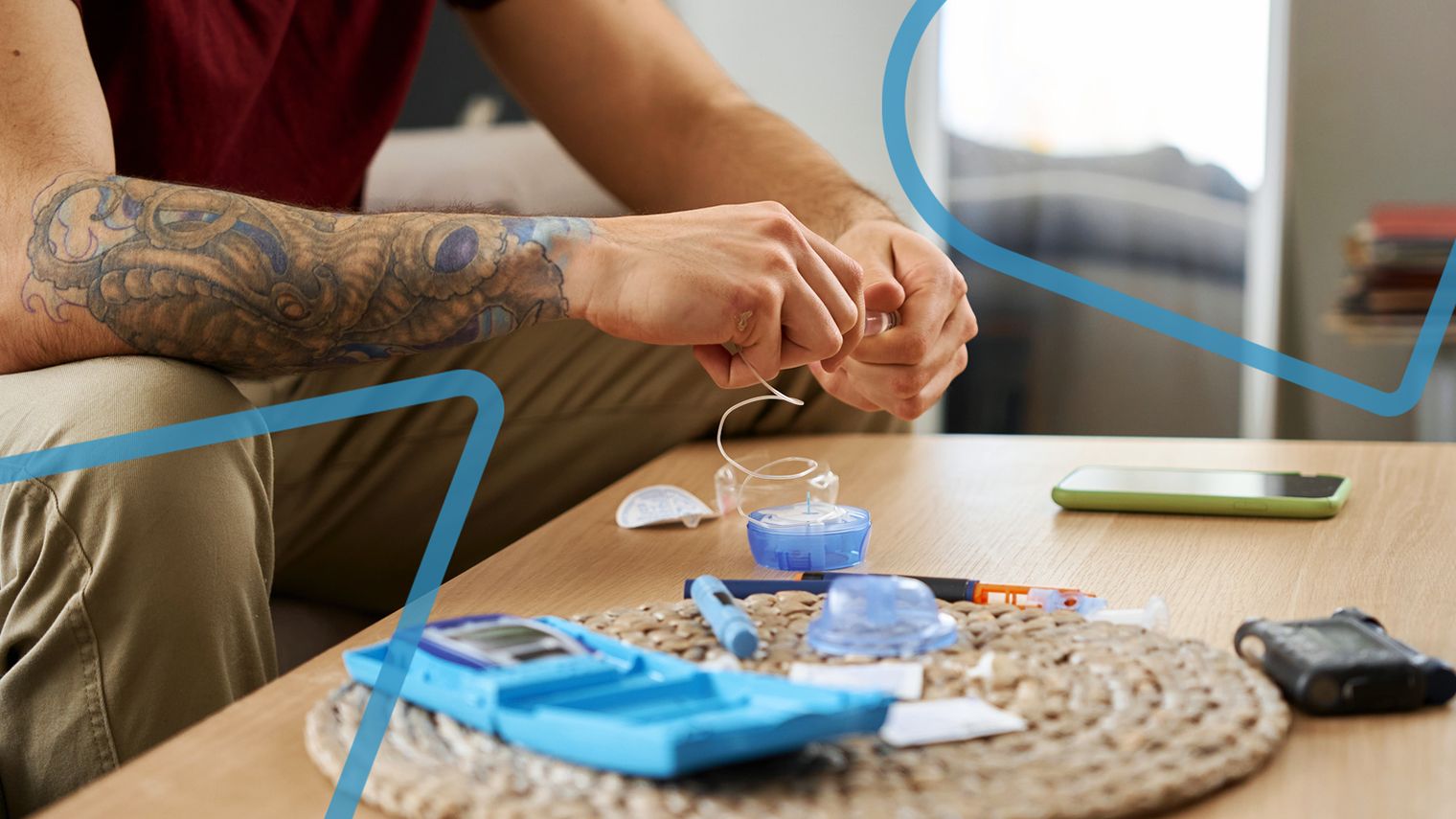6 Tips for Coping with Diabetes Burnout
March 02, 2023
Content created for the Bezzy community and sponsored by our partners. Learn More

Photography by Tatiana Timofeeva/Stocky United
Daily diabetes management can lead to feelings of burnout or distress, but you can manage it by joining a support group, focusing on one task at a time, and seeking professional help if you need it.
Have you ever felt frustrated, anxious, overwhelmed, or tired of managing your diabetes day in and day out?
If so, it’s possible you’re experiencing diabetes burnout, and you’re not alone. In fact, in any 18-month period, 33% to 50% of people living with diabetes can experience burnout.
Also called diabetes distress, burnout happens to many of us. It can often look like:
- not checking your blood sugar
- skipping medications
- canceling doctor’s appointments
- falling back into unhealthy habits
- feeling anxious or depressed
So, why does it happen? Living with diabetes takes its toll on us physically, mentally, and emotionally, and it’s normal to feel exhausted from it all.
Maybe you’ve set some goals for yourself, are working hard, and aren’t seeing the fruits of your labor. Perhaps your numbers aren’t coming down as quickly as you hoped. Or maybe you’re having a hard time with some complications from diabetes even though you’ve made significant lifestyle changes. When these challenges pile up, the frustration of it all can be enough for you to feel like you just can’t do it anymore.
In my 23 years of living with type 2 diabetes, I’ve had several bouts of burnout. During these times, I just wanted to feel “normal” for a little bit. I didn’t want to analyze every single thing I ate. I wished I didn’t have to worry about numbers. Really, I just wanted to take a break.
I was always hard on myself for behaving this way, ashamed that I just couldn’t cope. Only in the last few years have I begun to not beat myself up over these feelings. Instead, I recognize I’m struggling, and use the coping skills I’ve developed to help me come back to myself.
If you’re struggling with diabetes burnout, here are some tips to get you through it.


1. Find a support system
Surrounding myself with people who “got it” was a crucial step for me in living with and managing my type 2 diabetes.
There are several support groups and online communities, like Bezzy T2D, that you can join. Your doctor’s office may be able to refer you to in-person meet-ups as well. Being able to interact, vent, and share with others who have similar experiences is a game changer.
2. Talk with your doctor
Your medical team can be a tremendous resource when it comes to burnout. Make sure to tell your doctor if you’re struggling.
Your care team is familiar with diabetes and understands what it’s like living with this chronic disease, but they may not know how it’s affecting you personally. Share what’s going on so they can help you navigate through this phase.
3. Choose 1 or 2 habits to focus on
Instead of trying to tackle everything at once, focus on one or two habits to start so you feel less overwhelmed.
For example, for 2 weeks, try checking your fasting blood sugar and taking your meds. Little by little, as you feel ready, add other habits to your daily routine.
4. Show yourself some grace
One of my favorite sayings is “progress over perfection.” Sure, we all want our blood sugar levels to be in range all the time, but the reality is, sometimes they won’t be.
Stress, illness, environmental factors, lack of sleep, and about a thousand other factors can affect our levels. Let’s all focus on what we can control, how we nourish our bodies, how we move, and how we think.
All the rest? As Elsa would say, “Let it go.”
5. Set aside some time for yourself
We hear all the time to “make yourself a priority,” and often that’s interpreted as “put yourself first.” But let’s face it — most of us have a long list of things to do each day and our self-care may not even make it on the list at all.
So, I’m challenging you to put yourself on your daily to-do list. Whether it’s taking a 5-minute walk in the fresh air, doing a short meditation, coloring, or jamming to music in the car, do something each day that makes you smile.
6. Talk with a professional
If traditional interventions haven’t helped and you’re still experiencing diabetes burnout, consider reaching out to a mental health professional. A therapist can help you sort through your emotions and assist you in creating a realistic game plan to help you return to self-care.
The bottom line
There’s nothing to be ashamed of if you’re experiencing diabetes burnout. Your feelings are valid, you aren’t just being lazy, and you aren’t overreacting.
Living with a chronic disease like diabetes can be a roller coaster of emotions. There will be highs and lows, and all any of us can do is prepare ourselves, hold on tight, scream at the top of our lungs if we need to, and try to enjoy the ride when we can.
Medically reviewed on March 02, 2023
2 Sources


Like the story? React, bookmark, or share below:
Have thoughts or suggestions about this article? Email us at article-feedback@bezzy.com.